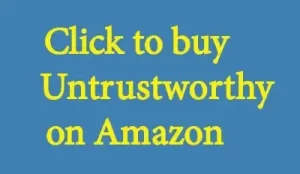So, What Do You Look Like Online?
This post is a riff on a rather old post, Do You Know What You Look Like Online. Essentially, the question is, if you were searching for someone (someone just like you, perhaps), what sorts of judgments would you make? What seems off?
What’s being suppressed, which aspects should you be promoting, and vice versa? Is the picture clear or fuzzy?
The gist of that article is, take control of your information, keep it as a uniform brand and check it every month or so. The corollary to this is one from Shama Hyder Khabani, which is, essentially, don’t spread yourself too thin. Concentrate in only a few places.
My Own Information—What I Look Like Online
Absolutely agreed. When I google my own last name, 40,900 hits come up. And, fortunately, my own website is on page 1 (Yay, SEO!). My Entrepreneur profile (writing I did for work) comes up on the first page of results. So do my Twitter/X and LinkedIn profiles.
Also on the first page are my Facebook profile, and my Amazon author page. Get to page 2 and there’s my profile on YouTube.
Another Angle
Putting my last name into quotation marks yields 6,480 hits. All of the same usual suspects come up on Page One of the results. And nothing is too weird or scandalous. Even MuckRack, which essentially just scrapes for your name, doesn’t have anything bad.
Hey, Bartleby published me!
How Accurate is the Information?
To my mind, checking and rechecking every single month might just be a bit excessive. Is there a need to keep your profile accurate? Sure. Flattering, or at least not damaging? Yes, particularly if you are looking for work.
But to keep it sterile and perfect, as you scramble to make it perfect every moment of every day? Eh, probably not so much.
My own profile is the product of just doing a lot, and it being published. It’s easy to find flattering info on me. What I look like online is competent more than anything else. There’s nothing radical.
As for less flattering stuff, well, let’s just say that I am glad the internet wasn’t around when I was in high school.
Yikes.
But…
I would like to think (am I naïve? Perhaps I am) that potential clients and employers will see the occasional typo and will, for the most part, let it slide unless the person is in copyediting.
I am not saying that resumes, for example, should not be as get-out perfect as possible. What I am saying, though, is that this kind of obsessive and constant vigilance seems a bit, I don’t know, much.
Will the world end if I accidentally type there instead of their on this blog? And, does it matter oh so much if I don’t catch the accident immediately? Even when you consider that I’m a writer. After all, I should know better, yes?
I mean, with all of this brushing behind ourselves to cover up and/or perfect our tracks, and all of the things we are leaving behind, where’s the time and energy to make fresh, new content and look in front of ourselves?
Clean Up Your Presence
To me, there is little joy in reading a blog post or website that looks like the person who put it together was barely literate. But there is also little joy in reading sterile, obsessively perfect websites and blog posts.
A little imperfection, I feel, is a bit of letting the ole personality creep in there. Genuineness – isn’t that what the whole Social Media experience is supposed to be about, anyway?
I refuse to believe – I hope and I pray – that a bit of individuality never cost me potential jobs or any company I’ve ever worked for potential clients.
And if it has, then that saddens me, to feel that, perhaps, people are paying a lot of lip service to the genuineness of Social Media but, when the chips are down, it’s just the same ole, same ole.
Genuineness is great. One you can fake that, you’ve got it made? Please, say it ain’t so.
And don’t get me started on AI.
4 Comments






You must be logged in to post a comment.